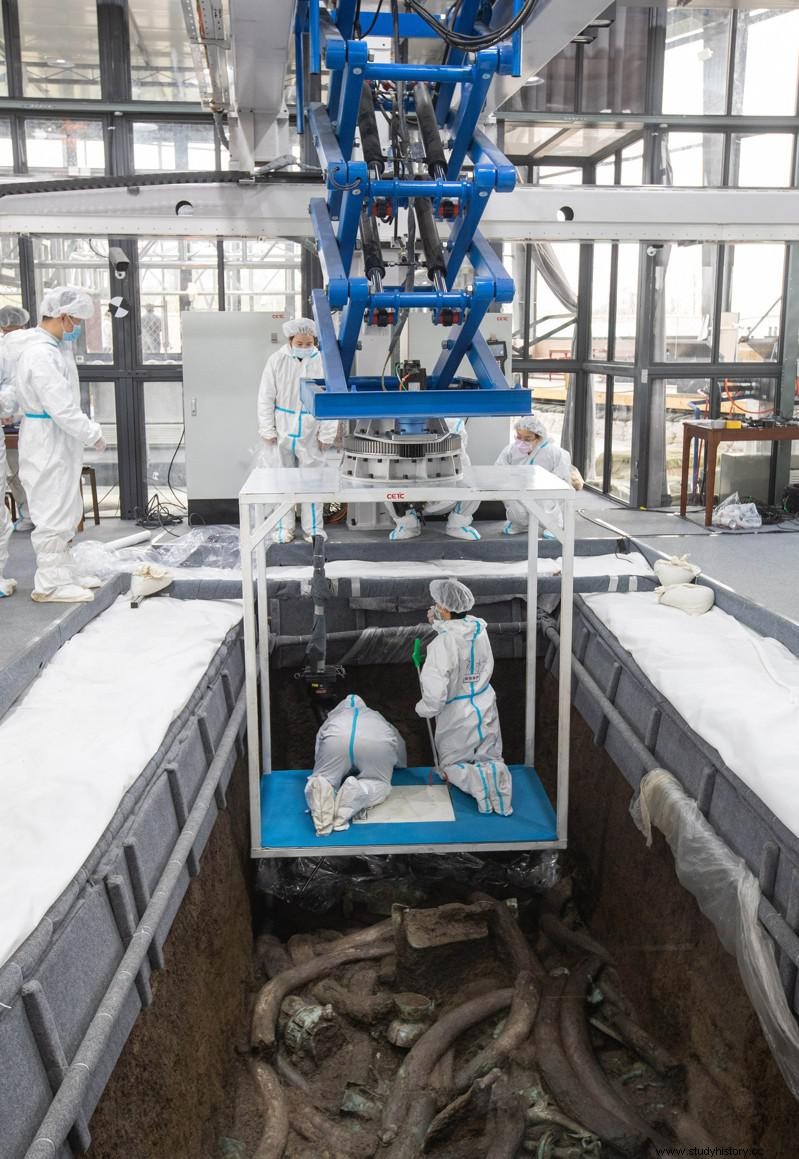
On March 20, 2021, the Department of Chinese Archeology announced an amazing discovery regarding the Sanxingdui ruins. More than 500 ancient artifacts were unveiled during the exciting weekend, giving a more detailed perspective of a mysterious civilization dating back almost 3,000 years ago around the Yangtze River basin in China.
Sanxingdui, or Sanxingdui Ruins, is an archeological site located in Guanghan, Si Chuan Province, China. It is known for a completely different style of art compared to other ancient Chinese dynasties. Thus, there is also a saying that a hidden culture is at the same time as the Shang dynasty in southern China. The Sanxingdui civilization was an independent culture outside the Yellow River, proving that the Yellow River basin was the only origin of ancient Chinese culture is inaccurate.
In this blog, I will briefly present the history of the discovery of this remarkable archeological site and the history behind the Sanxingdui culture and its value for human heritage. We will also look at the importance of the Sanxingdui culture, which represents a non-mainstream civilization in ancient China.
Discovery History
First discovery
In the spring of 1929, a farmer named Dao Cheng Yan dug a well in front of his house. He accidentally dug up a triangular pit full of delicate jade goods. Some stone panels surrounded the pit and made it look like a tomb. Yan and his family kept quiet about what they had discovered. They quickly moved most of the jade items home and hid these ancient treasures away from the public. Yan did not allow the family to spread information that they had found an old tomb under their house.
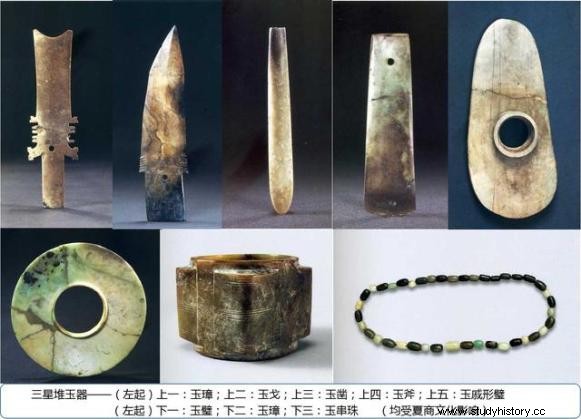
However, Yan could not resist the idea of selling some pieces of jade to improve his living conditions. He did not realize the real value of this old jade either, so he sold some at a moderate price. These jade articles soon caught the attention of other jade traders due to their unique art style. Some jade traders finally found the source of these jade artifacts by tracking the sales channels. Soon the rumor spread around the ancient market that there was a significant number of jade goods under the property of the village of Yan, which was called "Guanghan jade" at that time.
Some scholars and archaeologists in China also noticed these jade products on the market. A famous epigraphist, Xi Tai Gong, bought four pieces of jade from Yan for his study. Gong published a research journal in the newspaper about his findings on "Guanghan jade". After publishing this magazine, people went crazy going to Yan's village and hoping they could dig up some old jade.
Assistance from university students
In 1931, VH Donnithorne, a British missionary, borrowed some pieces of jade from Yan's family and brought them back to West China Union University (hereafter called WCUU, merged with Sichuan University today). He handed over these relics to Daniel Sheets Dye, an American geologist, to identify these jade goods. Dye soon concluded that these jade goods were from the end of the Shang dynasty. In June 1931, Donnithorne and Dye visited Yan's village in the hope that they could find more clues that led to the story behind Yan's discovery.
After the visit, Yan realized the importance of his discovery. He donated parts of his collection to WCUU for further studies. The county governor, Yu Cang Luo, ordered that all private excavations be banned from protecting the relic. In 1934, Luo invited David Crockett Graham, an American missionary and archaeologist who worked at the WCUU Museum, to form an official excavation team. They found 600 more objects in over ten days in the first organized excavation of Sanxingdui. Graham wrote a report on this excavation, called the "Han Zhou Excavation Report", which is also the first report for Sanxingdui for academic purposes.
Modern excavation stage
In the 1950s, during the construction of the Chengyu Railway, workers discovered jade and bronze relics next to the railway several times. The curator of the Southwest Museum (today the Three Gorges Museum), Han Ji Feng, suggested that some ancient tombs might be under the railway. Three years later, the Southwest Museum requested permission to start excavations around the Sanxingdui area. They have been searching for damaged and lost parts of the Sanxingdui ruins ever since. In the 1970s, many brick factories were located around the relic and caused massive damage to historical remains nearby. In May 1980, the Sichuan Province's archeology team tried to rescue the objects in the Sanxingdui ruins and protect them from being damaged by local economic activities. They found 18 residential foundations 3,000 to 4,000 years ago, four tombs and hundreds and thousands of pottery, stone and jade crafts.
In 1982, the National Cultural Heritage Administration (hereinafter referred to as NCHA) created special funding to support the excavation and research of the Sanxingdui ruins. One of the most significant excavations took place in 1986, where Chinese archaeologists found two large sacrificial pits with thousands of gold, jade, bronze and ceramic crafts in them, including the well-known bronze masks and the bronze tree.
In particular, there are some rumors about the excavation of the Sanxingdui ruins. A most widespread story says that the excavation had stopped since 1986. The Sanxingdui Museum clarified this in their official Weibo post. The saying that the excavation had stopped for 34 years since 1986 is incorrect. The fact is that they have worked with several discoveries instead of focusing on the uncovered sacrificial pits. The latest update on March 20, 2021 is about a new sacrificial pit. Chinese archaeologists had reported many new finds before this update.
About Sanxingdui -cultur
As mentioned above, the Sanxingdui culture proves that a highly developed and independent civilization coexisted with the Shang dynasty in southern China. Three theories explain the origins of the Sanxingdui culture. One of them sounds ridiculous:that the Sanxingdui culture was a foreign culture that came from space. The other two theories come from some ancient documentaries.
"Cang Cong" theories
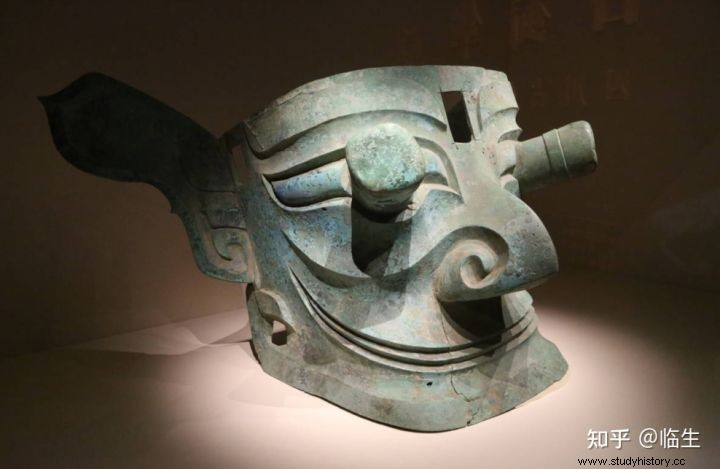
The first says that a country called Cang Cong created the Sanxingdui culture. Most Chinese scholars believe in Cang Cong origins because they find the style of the bronze masks very similar to the king of Cang Cong's appearance. Some documentaries recorded that the king of Cang Cong had protruding eyes. Interestingly, these bronze masks have exactly the same property with protruding eyes. According to the Chronicles of Hua Yang, a newspaper in the Jin Dynasty (348-354 AD), there was an ancient kingdom called Shu, which occupied southwestern China 3,000 to 4,000 years ago. Cang Cong founded the Shu Kingdom. The Shu people forged bronze masks and other eye-shaped crafts with bizarre protruding eyes to worship their king- Cang Cong.
"Yu Fu" theories
The second theory mentioned another country called Yu Fu. In the Chronicles of Hua Yang, Yu Fu was the third king of the Shu kingdom. Yu Fu established Guanghan City as the capital of the Shu Empire, which geologically corresponds to the location of the Sanxingdui ruin. At the time of Yu Fu's rule, the Shu Empire was at the same time as the late Shang Dynasty, according to The Shang Shu, an ancient Chinese documentary. Scholars find that the Shu Empire made these bronze and jade artifacts in the Sanxingdui ruins around the late Shang dynasty. Therefore, placement and time evidence can also support the Yu Fu theory.
The Alien Origin Theory
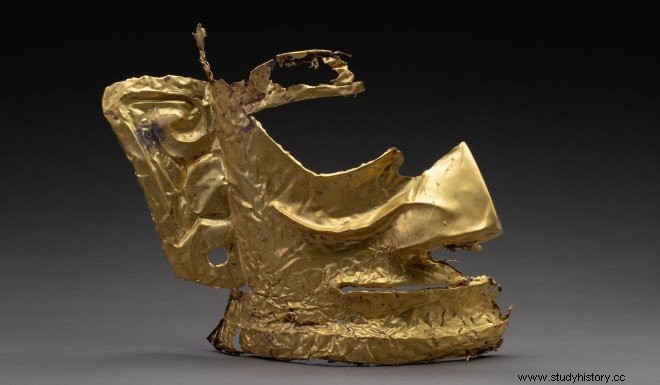
This seems a bit ridiculous because foreign origin theory is more like folklore. People who insist on this theory believe that the Sanxingdui culture came from space 3000 years ago. They claim that the bizarre art style of the Sanxingdui relic is so much different from all other known art styles from existing or past civilizations.
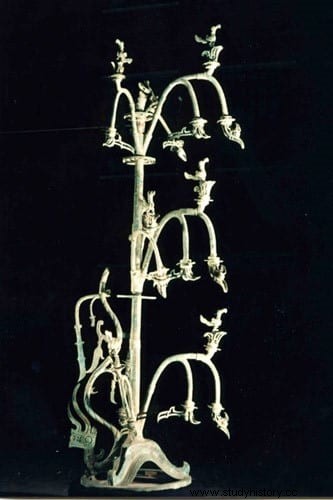
However, studies show that the uncovered bronze objects from Sanxingdui have a similar craft technique to other objects from Central Plains (the yellow river basin). Researchers find that the typical Chinese bronze "Zun" and "Lei" sacrificial vessels from the Sanxingdui ruins share similar characteristics with crafts from the late Shang dynasty. Although the bronze trees and worms are so unique that they look like from space, strong evidence shows that the Sanxingdui culture communicated to some extent with the Yellow River Basin.
Mystical civilization
Scholars believe that the Sanxingdui culture was a highly developed and independent civilization. This civilization had some connections and communications with other ancient Asian civilizations at that time. Sanxingdui jade wares and gold craft craftsmanship and art style share some similarities with other relics found in Southeast, West and Central Asia. The pottery and shells left in the sacrificial pits came from India and other parts of Asia through maritime routes. Researchers are unsure how the Sanxingdui culture did it since the landscape of southwestern China is mountainous.
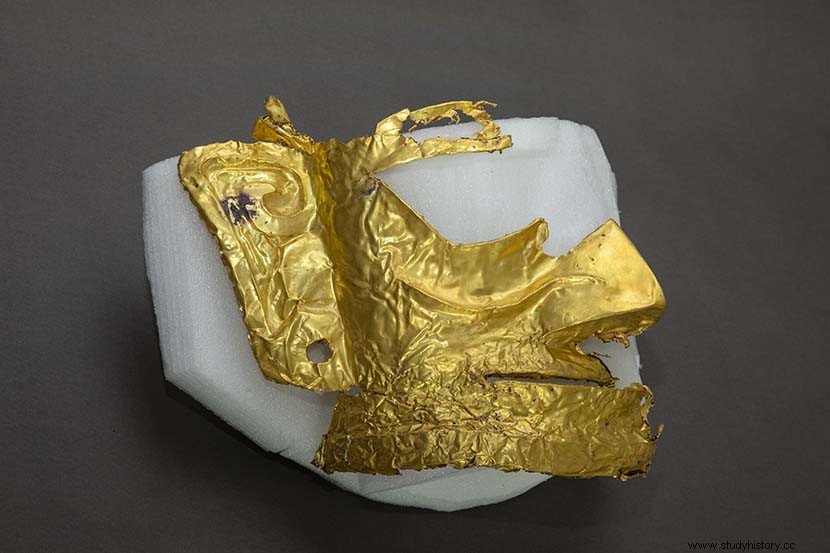
Mystery 1:No official stories
Apart from the very innovative art style and craft techniques, the Sanxingdui civilization leaves us with too many mysteries. First of all, the Shu Empire founded the Sanxingdui civilization. But all the documentaries mentioned about this ancient kingdom were lost during wars and dynasty changes. There was once a written record of the Shu Empire, but it was already lost in the Song Dynasty (960-1279 AD). Therefore, no existing written document can provide scholarly evidence that explains the Shu Kingdom regarding its customs and history.
Mystery 2:No written or oral language
Second, the Sanxingdui civilization had neither literal nor verbal proof of language. Usually, as in the Yellow River Basin art style, ancient Chinese would carve out some texts on sacrificial vessels as part of the ritual. But apart from animal or eye-shaped patterns, no texts have been found on Sanxingdui relics. However, some ancient documentaries such as The Chronicles of Hua Yang or The Shang Shu did not mention the details of the Shu kingdom. These two reasons are the main obstacles for scholars to find out more about the Sanxingdui civilization.
Mystery 3:the "invisible" Sanxingdui culture
Third, scientists confirm that the Sanxingdui civilization existed for at least 2,000 years. Other ancient civilizations nearby (such as the Jinsha site and Baodun culture) had no record of the Sanxingdui civilization. How can a developed civilization become "invisible" to other ancient civilizations? If the Sanxingdui civilization was "invisible" to them, how did the Shu Empire incorporate a similar craft technique as the Central Plains?
Mystery 4:Sudden disappearance
Last but not least, the Sanxingdui civilization suddenly disappeared after its 2000-year existence. Just like the Mayan civilization, the Sanxingdui civilization disappeared from the earth without signs. Was it a war that destroyed the Shu kingdom? Was it a natural disaster that caused extinction? Where did people go? Why did they not keep their old traditions if they managed to survive and moved away? So far no one was able to send in the perfect solution, which is not strange. In particular, the Sanxingdui civilization was located at 30 degrees latitude north, the same as the Mayan civilization and the ancient Egyptian civilization.
Anthropology:The Significance of the Sanxingdui Culture
The latest update from the Department of Chinese Archeology confirms that they found ivory, silk and gold from the ruins. This may lead to a correction of the relationship between the Sanxingdui culture and other ancient cultures in the vicinity. Researchers believed that the Sanxingdui culture was independent of other cultures before this update. But this time, they are discovering new connections between these cultures.
This may be the most exciting find for Chinese archaeologists. Through recently discovered relics, they see several similarities between the Sangxingdui culture and the cultures that were discovered near it. While this evidence is not sufficient to explain why civilization would disappear, it may explain whether the people of the Shu Empire moved away after civilization was exterminated.
The Sanxingdui culture also provides the opportunity to prove the existence of the Xia dynasty. The Xia Dynasty is a controversial period in ancient Chinese history. It appears mainly in ancient folklore and novels. Scientists describe it as an "age of mythology", which is difficult to confirm that it is real. The Xia Dynasty in ancient Chinese history, for example, is the story of "God created the world" in Western culture. Thus, academia argues a lot about the authenticity of whether the Xia dynasty existed before the Shang dynasty. If the Xia dynasty existed, Chinese civilization would be the longest civilization that has not interrupted in almost 5,000 years.
the conclusion
In conclusion, the discovery of the Sanxingdui ruins shows that ancient Chinese culture was multi-core. The latest update from the Institute of Chinese Archeology tells us that the Sanxingdui relics were from 4000-4800 years ago, which may prove that the Xia dynasty existed before the Shang dynasty. Studies also show the connection between relics from different archaeological sites. This may answer why the Sanxingdui culture disappeared 3000 years ago. We just have to wait for the upcoming announcements from scholars.
If you are interested in the Sanxingdui culture and you want to see it with your own eyes, you can either visit the Sanxingdui Museum located in the city of Guanghan, Sichuan Province, China, or keep an eye on the information about the travel exhibition of Sanxingdui relics.
